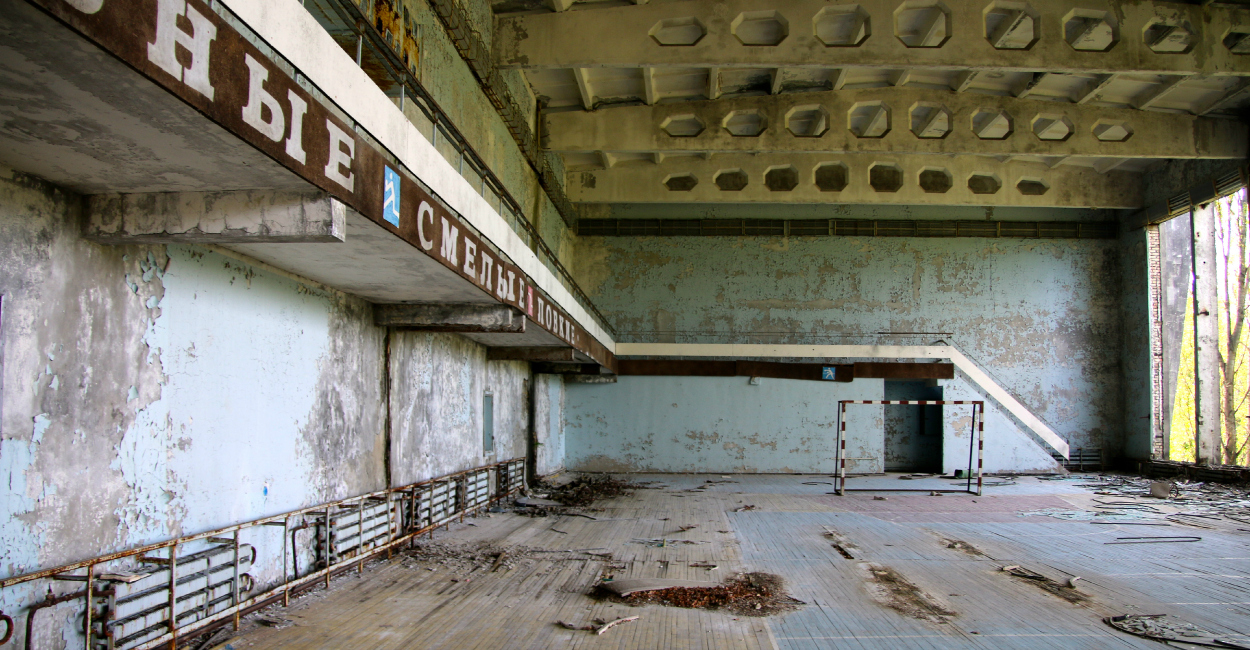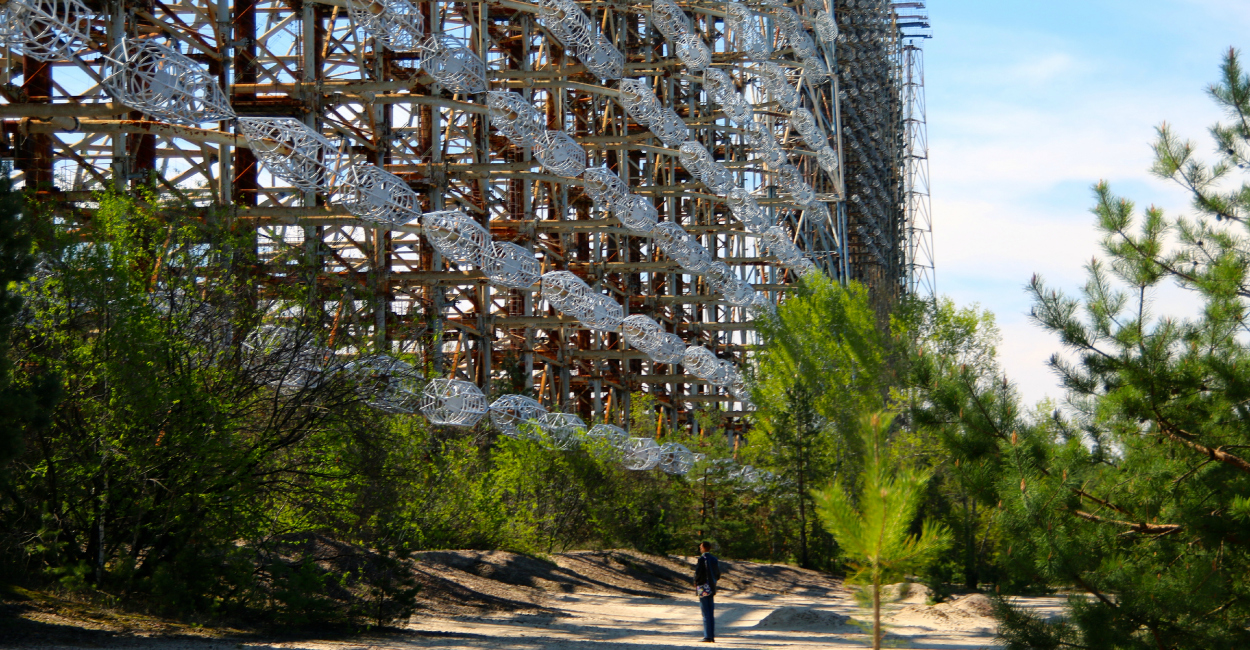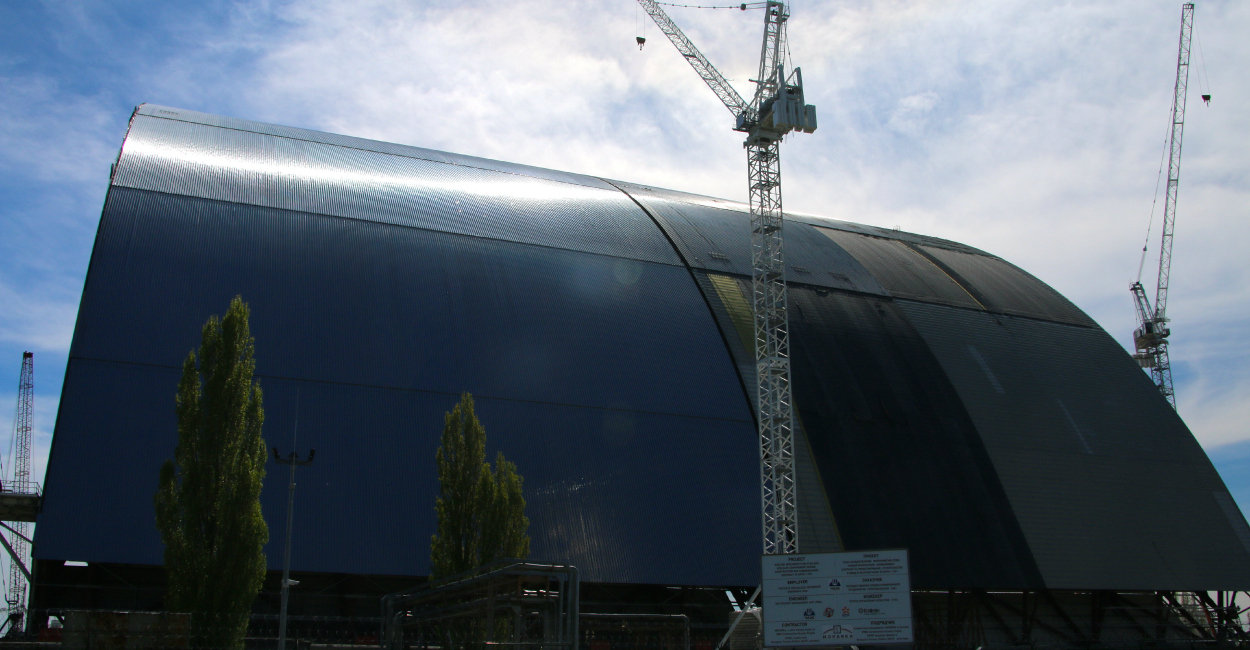29 Years After Chernobyl Nuclear Disaster, Life Slowly Returns to Normal
Nolan Peterson /
CHERNOBYL, Ukraine—On April 28, two days after the 29th anniversary of the Chernobyl nuclear disaster, a forest fire near the retired nuclear power plant threatened to send radioactive particles into the air.
The Ukrainian Interior Ministry issued a statement assuring the public that there was no risk of radioactive contamination spreading out of the 30-kilometer radius of the exclusion zone, which surrounds the radioactive remains of reactor No. 4.
“The situation is under control … our state emergency service is working quite hard to prevent the fire from expanding,” Ukrainian Prime Minister Arseniy Yatsenyuk said on Ukrainian television.
While last week’s fire ultimately posed no serious risks, the alarm it raised in news reports around the world highlights lingering concerns about Chernobyl’s dormant threat. Yet, in the 29 years since the 1986 nuclear disaster, life has slowly inched back to normal within the areas evacuated near the ruined nuclear facility. Both nature and civilization have begun to reclaim the landscape.

Scenes from Pripyat, a town of 50,000, which was abandoned two days after the Chernobyl nuclear disaster (Photo: Nolan Peterson/The Daily Signal)
On April 26, 1986, reactor No. 4 at the Chernobyl Nuclear Power Plant sent a plume of radioactive material into the atmosphere, fatally contaminating the nearby areas and sending radioactive fallout across Europe. The resulting fire lasted 10 days, and released as much radiation as 400 Hiroshima bombs.
Today, tour groups travel up to within 300 meters of the destroyed reactor, which, despite being cocooned with a concrete sarcophagus, still emits more than 25 times normal ambient radiation, and standing so close has to be limited to about 10 minutes.
About 6,000 people work within the exclusion zone, 3,000 permanently. They dine on borsch and fried chicken alongside tourists at a cafeteria less than a mile from reactor No. 4. Geiger counters monitor the radiation levels in the cafeteria, assuring nervous tourists that it is safe to eat here.
No one under 18 is allowed inside the exclusion zone, however, and entrants are required to follow strict protocol to prevent radiation contamination. Workers’ shifts are limited to either four or 15-day stints. Anyone exiting the radioactive areas is required to go through radiation inspection points located 10 and 30 kilometers from reactor No. 4. Contaminated clothing or shoes are confiscated, and there is a facility on site to quarantine individuals whose level of radioactivity exceeds the threshold considered safe for exit.

The abandoned Duga-3 ballistic missile defense radar facility within the Chernobyl exclusion zone (Photo: Nolan Peterson/The Daily Signal)
While radiation levels are highest in the immediate vicinity of reactor No. 4, they do not diminish uniformly by distance. The exclusion zone is dotted with radiation “hot spots,” where radioactive material has accumulated. Geiger counters periodically chime their alarms when passing through these seemingly random pockets of radioactivity, which can be more than one hundred times normal levels.
Though the Chernobyl nuclear power plant no longer produces electricity (one reactor at the site continued to run until 2000), the facility still bustles with workers in contamination suits putting the finishing touches on a 100-foot-tall metal cocoon called the Chernobyl New Safe Confinement, which will be slid on top of reactor No. 4 and should contain its radiation for 100 years. The project is slated to be finished in 2017.
Within the exclusion zone, nature has overtaken the remains of villages and settlements abandoned in the days after the disaster. A herd of horses, which was brought in to tramp down grass to reduce the risk of forest fires, has thrived. Rabbits, deer and other wildlife are filling the thick, green forests. Massive 6-foot-long catfish live in a canal less than a kilometer from the nuclear facility. Workers assure the catfish are so large due to bread tossed by tourists, not radiation.
Yet, scattered throughout the exclusion zone is evidence of the seriousness of the 1986 disaster, which killed 31 in its immediate aftermath and will cause 4,000 early deaths, according to the World Health Organization.
The 50,000 residents of the town of Pripyat were evacuated two days after the nuclear accident. Today, the town is a ruin, slowly decaying as nature takes its toll. The roads are overgrown with trees and grass, and the concrete buildings are crumbling. In an abandoned school, textbooks dating from the 1980s are covered in dust. On the ground floor of the local community center, posters of Vladimir Lenin still hang from the walls. The town is a snapshot of life at the tail end of the Soviet Union’s lifespan, frozen in the time and day of the 1986 nuclear accident.

The metal cocoon being built to shield reactor No. 4 for 100 years (Photo: Nolan Peterson/The Daily Signal)
Down an overgrown road is a once secret Soviet military facility, containing the massive Duga-3 ballistic missile defense radar. Local residents were told the site was a children’s summer camp, and a decaying bus stop outside the site still has a teddy bear mosaic on its wall, which was part of the ruse.
Besides the 6,000 workers who live in stints within the exclusion zone, there are also some resettlers who have returned to reclaim homes lost when the area was evacuated. The Ukrainian government allows them to live here, mostly due to their advanced age (many are in their late 80s). But life inside the exclusion zone is tough for those looking to reoccupy their abandoned homes. They have no electricity, gas or running water. They have to grow their own food or make a long trek to one of only a handful of supply depots within the exclusion zone.
Today about 200 resettlers remain permanently living inside the exclusion zone—about 80 percent of whom are women.
